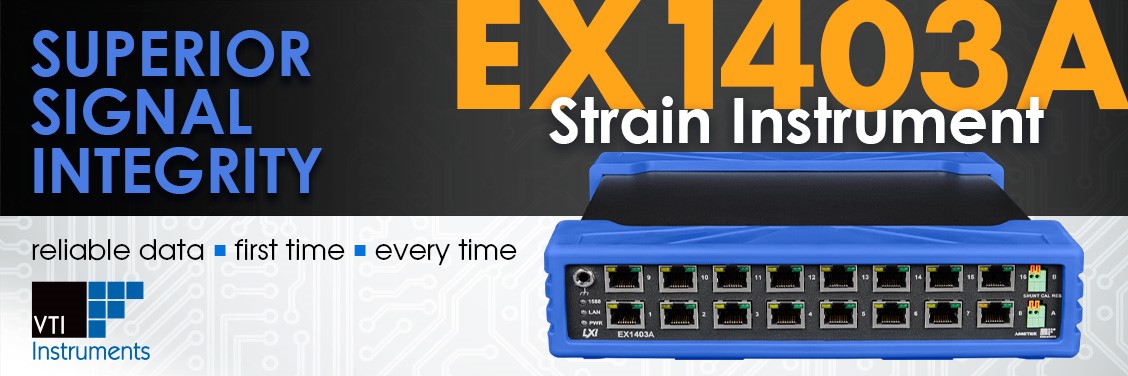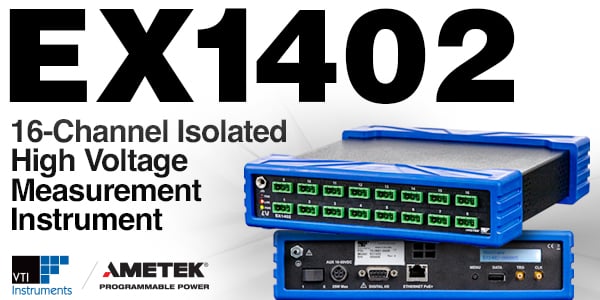Signal integrity matters. Whether you’re designing a new jet engine or building a medical-grade freezer, you need bulletproof testing to ensure that your products are up to spec. The only way to do that is through proper data acquisition systems with uncompromised signal integrity.
If you don’t have signal integrity, you can’t validate your designs. It’s as simple as that. Without signal integrity, you risk getting inaccurate data, leading to:
- False pass/fails
- Regulatory compliance issues
- Additional testing and costly prototypes
- Delayed development/production
That’s why signal integrity must be at the pinnacle of every data acquisition system in order to keep your products – and your business – in check.
The Importance of Data Acquisition
Why would you even bother measuring something if you can’t be certain that the measurement is correct?
Unfortunately, testing is often an afterthought for many designers or viewed as something that just needs to get done. However, proper testing and data acquisition are just as vital to creating a good product as the design process itself. Having an engine or a missile that theoretically works on paper or within CAD isn’t enough – your designs need to actually be able to work in the field.
That’s where data acquisition comes in. A crucial part of any functional or black box test, data acquisition involves using sensors and data processing systems to report on the performance of your products given certain stimuli.
Sensors work by monitoring whatever physical property you’re interested in and converting that into an electrical signal so that it can be easily measured and recorded. Different things that test engineers may measure for include:
- Temperature
- Pressure
- Flow
- Strain
- Rotation
- Acceleration
- Displacement
The Benefits (And Dangers) of Signal Integrity
In order to have accurate test results, you need to prioritize signal integrity. Remember, your sensors aren’t directly outputting temperature or force measurements, but rather electrical signals that contain that information.
Signal integrity refers to the quality of an electrical signal. Essentially, the better your signal integrity is, the “truer” the signal will be. That way, when the signal is processed, you’ll have far more accurate results and better-qualified data to validate your products.
While maintaining perfect signal integrity is not really feasible – since some level of signal degradation is natural as a signal moves through a real-world system – minimizing signal degradation should always be the goal.
Data acquisition systems with high signal integrity are ones that minimize leakage and other sources of error while reducing cables/cable lengths to improve connections between instruments. Having well-integrated, synchronized systems offer a lot of benefits here. Not only are synchronized systems easier to set up and change, but their cohesive designs also enable improved signal integrity compared to most thrown-together systems.
Proper synchronization ensures that your sensors, controllers and other data acquisition instruments are integrated properly. Box-to-box synchronization will help precisely correlate all acquired data, leading to faster and more efficient data acquisition.
In addition to synchronization, having signal conditioning will also help with signal integrity. Signal conditioning involves turning the signal output from the transducers into something directly measurable. Types of signal conditioning include:
- Amplification
- Excitation
- Linearization
- Filtering
- Isolation
With built-in signal conditioning, you can better maintain your signal integrity as much as possible. This means more accurate data acquisition systems and quicker, more reliable product authentication.
While it’s great to talk about the benefits of signal integrity, it’s just as important to talk about what happens when your signal integrity fails. The very nature of signal integrity being so important presents a danger to the careless measurer. You won’t always know if your signal integrity was compromised… until it’s too late.
When your signals are degraded beyond reasonable levels, you’ll end up with false test results. That means having to starts those costly and time-consuming tests all over again, potentially incurring millions in additional expenses and missing out on development timelines. Things get exponentially worse if you think of what happens if you believe those false test results to be true…
Better Signal Integrity with VTI’s EX1403A
In order to help businesses optimize their data acquisition systems, the testing experts at VTI Instruments designed the new EX1403A Precision Bridge and Strain Gauge Instrument. Setting the standard for strain and bridge measurements, the EX1403A delivers the highest performance measurements possible while controlling overall test hardware costs.
The power behind the EX1403A lies in its ability to maintain the signal integrity of your system, even in the toughest operations. With built-in signal conditioning, programmable excitation, and selectable bridge completion, the EX1403A offers consistent repeatability and testing accuracy – all within a flexible data acquisition platform.
But superior signal integrity is just the beginning. The EX1403A offers additional performance-enhancing features to help you improve your testing and data acquisition. Other features include:
- Easy instrument communication through an Ethernet/LXI interface
- Seamless scalability from small to large channel-count systems
- IEEE 1588 (PTP) and POE (Power over Ethernet) capabilities to improve the ability to distribute the measurements
- “Plug and play” ready software
- Unbeatable value/performance ratio








